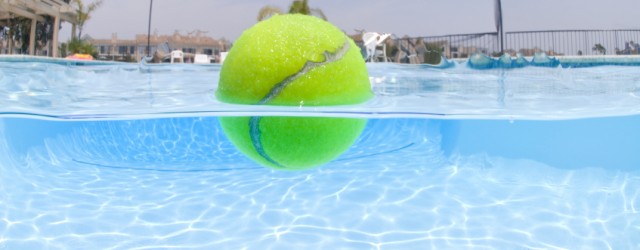When in Spain, make the most of the glorious weather and enjoy the pool in your garden or on the terrace. A quick dip into the cool blue water whenever the fancy takes you is surely one of the most enjoyable things about living in Spain. Swimming is not just fun for all the family, it’s a great way to stay in shape. For the kids, being confident swimmers is one of those life skills that every parent can get wholeheartedly behind.
It’s rare to find a villa without a swimming pool on the Spanish Costas but it’s not unheard of. If this is your situation, it’s a golden opportunity to add value to your Spanish home by putting in a pool exactly to your specifications and design. Make sure you use an experienced and reputable pool construction company with a flair for design and check out their previous work for peace of mind.
If your villa does have an outdoor pool, regular pool maintenance is key to keeping it in top condition. This needn’t be difficult and can be done by yourself as long as you take a bit of time to understand about pool chemicals and filtration. Alternatively, your gardener can take care of your private pool maintenance or you can hire a ‘pool guy’ for a few hours a week at very reasonable rates or appoint a professional pool cleaning company.
Regardless whether or not you decide to carry out your own pool maintenance, it’s important to schedule in a professional pool service once a year. Even if there seems to be nothing wrong with your pool, a professional visit can help to catch small issues with the pumps, filters or heating before the turn into a much bigger and costlier problem further down the line.
Here are the 7 steps to looking after your outdoor pool:
1. Skim debris from the surface every other day
The water’s surface is where most damage occurs. Leaves and other debris can fall into the pool and sink to the bottom unless fished out at the earliest opportunity. The longer you leave it, the further the dirt will sink. Not only does this make it more difficult to clean, it can clog up your filtration system. Get into the habit of using a net or hand skimmer every other day to keep on top of detritus in the pool. Here’s how it works:
https://www.youtube.com/watch?v=9E_FCXpp4EU
2. Brush and vacuum clean the pool once a week
Once a week, brush down the walls of your pool to algae building up, then vacuum the pool floor to get rid of any debris that’s sunk to the bottom. Swimming pool vacuums are readily available and easy to use, as is shown here:
https://www.youtube.com/watch?v=U43osSCIFa8
3. Balance the pH of your pool chemicals
This is the really important bit. If you get the balance of the chemicals wrong, it can turn the water murky and green – the perfect conditions for algae and bacteria to multiply. Check the pool regularly by using a testing kit to take readings. A pH value of 7.4-7.6 constitutes a healthy balance. If you know who installed the pool, ask the swimming pool builders to recommend the correct chemical composition. It’s the best way to ensure the longest possible lifespan for your pool.
https://www.youtube.com/watch?v=sh6EByBt0g8
4. Set a schedule for cleaning the filter
There are 3 types of pool filter – cartridge, sand or DE (diatomaceous earth) – that can become clogged with debris, and they all have different requirements when it comes to cleaning. Left untended, it reduces the flow of water circulation and causes the pressure to rise in the system. Keep an eye on the pressure gauge – if it’s above 10psi, chances are that your filters need cleaning out. It’s a good idea to set up a regular cleaning schedule to make sure this important job isn’t forgotten.
5. Tip: Use a tennis ball

Here’s a clever tip to mop up any unwanted residue left on the surface of the pool water, including oil from sun creams. Throw a regular tennis ball into the water and let it gradually soak up the residue, getting rid of the dirt and helping to clean your pool without any fuss or effort on your part. Here’s how it works:
https://www.youtube.com/watch?v=YnndfD89s6Q
6. Shock the water
Sometimes, you’ll notice an overpowering smell of chlorine around the pool. The reason this happens is not because there’s too much chlorine in the water but because contaminants such as ammonia and nitrogen are mixing with the chlorine, causing the unpleasant smell. Rather than putting less chlorine in, you actually need to put more in. Follow the manufacturer’s instructions for ‘shocking’ the water with a high dose of chlorine and you’ll find that the water will be glass clear within a few days. Don’t swim while the shock treatment is in process as it will irritate your skin. Here’s a handy explanation:
https://www.youtube.com/watch?v=-NVMTEnpUh0
7. Clean around the pool
Don’t forget that the area around the pool itself will need regular cleaning and disinfecting. Whether it’s wooden decking, a tiled or paved sun terrace, the area can get very slippery which is a health hazard for kids and adults alike. What’s more, the moist surface is a perfect breeding ground for bacteria that can easily transfer into the pool.




